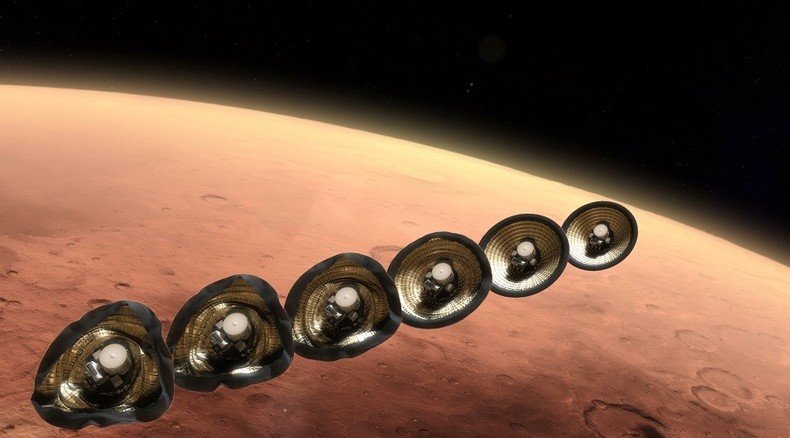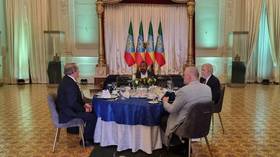NASA seeks student ideas for landing massive cargo on Mars in one piece

NASA has announced a competition for bright young researchers to help devise a US journey to Mars by developing a fresh concept for landing cargo on the red planet. Students are to use an inflatable aerodynamic decelerator and heat shield technology.
The Breakthrough, Innovative and Game-changing (BIG) Idea challenge seeks bright ideas from the academic community to provide future missions to Mars planned for the 2030s with additional flexibility.
College students: We're seeking your ideas for technology to help with our #JourneyToMars: http://t.co/J2wyf9ONnUpic.twitter.com/LBtbhMTUIh
— NASA (@NASA) September 18, 2015Run through NASA’s Game Changing Development program (GCD), the contest is open to undergraduate and graduate students teams studying aerospace, electrical, and mechanical engineering as well as life, physical, and computer sciences.
“NASA is currently developing and flight testing HIADs [ Hypersonic Aerodynamic Inflatable Decelerator] – a new class of relatively lightweight deployable aeroshells that could safely deliver more than 22 tons to the surface of Mars,” said Steve Gaddis, GCD manager at NASA's Langley Research Center in Hampton, Virginia. “A crewed spacecraft landing on Mars would weigh between 15 and 30 tons.”
#NASA testing inflatable spacecraft technology to get humans to #Marshttp://t.co/rYl3JRYjqH via @CTVNews#spaceflight#LaRC#HIAD ☆ ♂ ☆
— Robert Cattrysse (@RobertCattrysse) January 4, 2015By attracting young minds NASA is hoping to overcome the challenge of delivering heavy earthly loads through the thin Martian atmosphere. The quest is to develop a large aero shell that can offer “enough aerodynamic drag to decelerate and deliver larger payloads.”
The mission to eventually send humans to the red planet, NASA estimates, will require a spacecraft capable of landing dozens of metric tons of cargo.
READ MORE: Australian student’s ion space drive reportedly beats NASA’s fuel efficiency record
“HIAD articles of up to 20m in diameter may be required for this application. The HIAD can be stowed efficiently in an Earth departure vehicle and then deployed exo-atmospherically prior to Mars entry,” NASA said.
NASA hopes to recruit up to four teams to compete at the BIG Idea Forum at the NASA Langley Research Center (LaRC) in Hampton, VA. Each team will receive $ 6,000 award while the winning team members will receive an internship at NASA.











